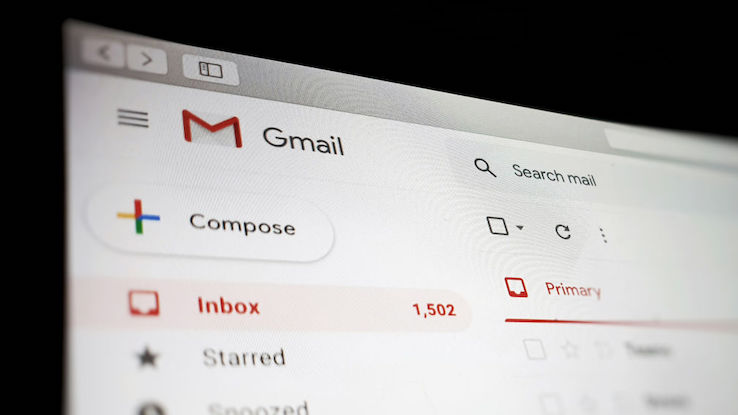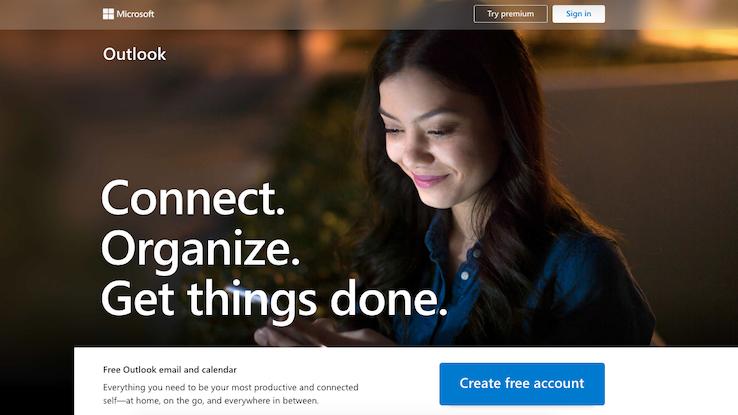How Do I Create a New Email Account?

In today’s digital age, having an email address is essential for everything from paying your utility bill online to signing up for streaming services to staying in touch with friends and loved ones. Emailing is one of the most commonly used forms of communication around the world, and having an email address streamlines a wide variety of tasks you might complete online. If you’re ready to sign up for an email account, learn how to navigate the process, along with some helpful tips about picking an effective name and selecting the service provider that’s right for you.
How to Choose an Email Service
Most people send emails today using webmail, which is any email service you can access from an internet browser — as opposed to downloading special email software onto your computer and having to run that program in order to get into your inbox. This is convenient because you can sign into your account and check your emails from just about any internet-connected device. There are quite a few different webmail clients out there, with some of the most popular and best-known including Gmail, Outlook/Hotmail, Mail.com and Yahoo! Mail.

The first big decision you’ll make when creating a new email account is selecting a provider. Although for the most part email clients serve the same general purpose — letting you send and receive digital mail — each provider’s website, interface and features are slightly different. If you’re more familiar with Microsoft’s operating system and appearance, you may prefer Outlook, particularly because it’s also available in the company’s Office Suite, which you might use for work. Gmail, on the other hand, has a cleaner look and more organizational tools, and because so many people use it, it may be easier for you to chat with friends and family using this client. Take some time to review how each client works, what it looks like, whether it offers benefits such as cloud storage and how user-friendly it feels to you.
Your local internet service provider (ISP) may also have its own email client you can use as long as you pay for the company’s services. While it may seem convenient to opt for this, GCFGlobal recommends sticking with a free webmail provider instead of your ISP. The email interfaces ISPs use tend to be more complicated to navigate than webmail, and they often don’t give you much storage space for your messages. If you need to move to a new area or you decide to switch to a different ISP, you’ll lose all your old messages and contacts, which can be a major hassle if you have a lot of information sitting in your inbox. Stick with free webmail so you can always keep the same address.
The Signup Process: What You Need to Know
In general, the process of signing up for an email account is similar across the board for the popular webmail clients, and it only takes a few minutes. You’ll start by visiting the client’s website, such as Gmail.com or Outlook.com. Look for a button or link with text like “Create Account” or “Sign Up” that indicates it’ll take you to the page where you can begin the process.

On this next page, you’ll add some personal information like your name, birthdate and location. You’ll also choose the username you want, which is the portion of your address that appears before the “@gmail.com” or “@outlook.com” extension. It’s important here to choose something that’s evergreen, such as your name, if you’re planning for this to be the main or only address you use. It should be a username that you’d be comfortable sharing with your boss, not a pun or something trendy you might find embarrassing later. If possible, try to make it something easy to remember and pronounce — think about how it sounds spoken aloud for those times when you tell someone your address. After this, you’ll select a password.
Depending on the client you choose you might also need to enter your phone number for verification purposes. After accepting the site’s terms and conditions and its privacy policy, your new account will be ready. You can sign into your inbox by visiting your webmail provider’s homepage and looking for the fields where you enter your username and password.
Keeping Your Email Address Secure
Now that you have your own digital mailbox, it’s helpful to know a few tips about keeping your account information secure. After all, you might start using your email address for services like online banking or communication with medical providers, and you don’t want any personal information like other account names and passwords to end up in the hands of a hacker or someone else who might misuse or exploit it.

One of the easiest yet most effective things you can do to secure your account is to use a unique and strong password. This means it should be a password you don’t use on any other sites, and it should be somewhat complicated — something other people can’t guess about you, like your birthdate, name or other personal information. It should be on the longer end; don’t use something with only one word and a few numbers, like “password123.” Instead, consider choosing a meaningful phrase like song lyrics or an abbreviation using the first letter of each word in a sentence.
Another way to secure your address is to set up two-factor authentication if your provider allows it. This process involves completing two separate steps to access your inbox. For example, you’ll type in your password on your inbox homepage as the first step. Then you might receive a text message on your phone with a code you need to type into your email provider’s website before you can get into your emails. This helps the website know that it’s really you accessing your account because you had to both know your password and have your smartphone nearby to get into your inbox.





